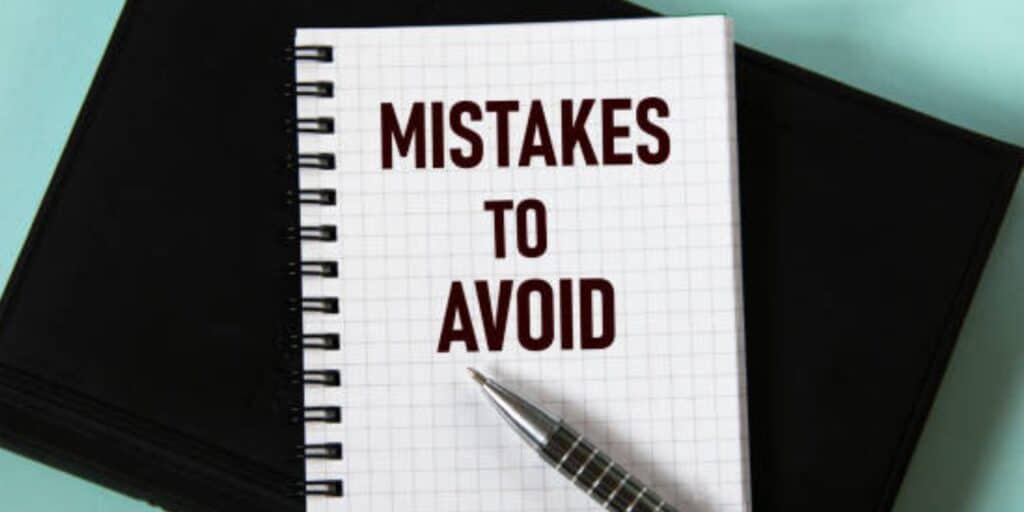Purpose: This article aims to educate business professionals and entrepreneurs to win a proposal by knowing the importance and elements of a winning proposal.
When it comes to business, there’s nothing more important than effectively communicating the value of your products or services to potential clients.
And that’s precisely what a business proposal is all about. It’s a way to tell a compelling story about how your company can help a potential client solve a problem or meet a need.
In this guide, we’ll dive deeply into the world of business proposals and show you how to create a proposal that tells a story that your potential client needs to pay attention to.
We’ll cover the different types of business proposals, how to understand the client’s unique needs and tailor your proposal to meet them, and tips for making your proposal stand out from the competition.
If you’re ready to learn how to create business proposals that get results, you’re in the right place. Let’s dive in!”
Explanation of a Business Proposal and Its Purpose

A business proposal is a story. It’s the story of how your products or services can help a potential client solve a problem or meet a need.
It’s a way to communicate the value of what you have to offer in a way that’s engaging, persuasive, and memorable.
Think of it this way: imagine you’re at a dinner party, and you meet someone looking for a solution to a problem they’re facing.
They’re telling you about the problem, and you realize you have a product or service that could help. You start telling them about it, and you’re excited about how it can help.
You explain how it works, its benefits, and how it can make a difference in their lives.
A business proposal is a story that you tell a potential client about how your products or services can help them.
It’s a way to communicate the value of what you have to offer in a compelling, persuasive, and memorable way. A good proposal is a story your potential client must remember.
But not all business proposals are created equal. Some are dry, boring, and forgettable. Others are engaging, persuasive, and leave a lasting impression.
So, what’s the difference?
The difference is in how you tell the story.
The difference is in how you communicate the value of what you have to offer. And that’s what this guide is all about, showing you how to create a proposal that tells a story that your potential client can’t ignore.
Different Types of Business Proposals
When it comes to business proposals, you’ll come across a few different types. Each one is designed to address a specific need or situation.
Here are a few of the most common proposals you’ll encounter:
Request for Proposal (RFP) – This type of proposal is typically used when a company is looking to outsource a specific project or service.
They’ll send out an RFP to several potential vendors, outlining the scope of the project, the budget, and the requirements. Vendors will then respond with a proposal outlining how they can meet those needs.
Request for Quotation (RFQ) – This type of proposal is similar to an RFP, but it’s typically used for goods or materials rather than services. A company will send out an RFQ to several potential suppliers, outlining what they’re looking for and asking for a quote on the cost.
Request for Information (RFI) – This type of proposal is used when a company is trying to gather information about a specific product or service. They’ll send out an RFI to several potential vendors, asking for information about their products or services, pricing, and capabilities.
Pitch Proposal – This type of proposal is used when you’re trying to sell a product or service to a potential client. It’s a way to introduce yourself, your company, and what you offer in an engaging, persuasive, and memorable way.
Partnership Proposal – This type of proposal is used to establish a partnership with another company. It’s a way to communicate the value of the partnership, how it will benefit both companies, and how it will help them.
Each type of proposal serves a specific purpose, and it’s essential to understand the one appropriate for the situation.
Understanding the different types of proposals will help you create a proposal that addresses the right need and tells the right story.
Importance of Understanding the Client’s Needs

When creating a winning business proposal, one thing is more important than anything else: understanding the client’s needs.
After all, a proposal is about solving a problem or meeting a need of a potential client. If you understand that problem or need, your proposal will likely succeed.
Think of it this way: imagine you’re at a dinner party, and you meet someone looking for a solution to a problem they’re facing.
You start telling them about your product or service, but you need to figure out how it can help them. You’re just listing features and benefits without understanding how it can solve their problem.
How do you think that conversation is going to go?
Now imagine the same scenario, but this time, you take the time to understand the problem they’re facing.
You ask questions, you listen, and you learn about their needs. You tailor your pitch to show them how your product or service can help solve their problem.
How do you think that conversation is going to go?
The difference is in the understanding of the client’s needs. When you understand the client’s needs, you can tailor your proposal to meet those needs.
When you understand the client’s needs, your proposal will likely succeed.
So, what’s the key to understanding the client’s needs?
It starts with asking the right questions.
It’s about listening actively and listening to what the client is saying. It’s about researching and learning about the client’s industry, business, and unique challenges.
When you take the time to understand the client’s needs, you’re well on creating a proposal that tells a story that the client can’t ignore.
Tailoring the Proposal to Meet those Needs

Once you understand the client’s needs, the next step is to tailor your proposal to meet those needs. This is where the magic happens.
This is where you take the information you’ve learned about the client and use it to create a proposal that speaks directly to their needs.
Think of it this way: imagine you’re trying to sell a car to someone looking for a new one. You start talking about the car’s features and benefits, but the person you’re talking to is more interested in the car’s safety features.
You will only make the sale if you tailor your proposal to meet their needs. But if you focus on the safety features and explain how they can provide peace of mind for the buyer, you’re much more likely to close the deal.
Tailoring your proposal to meet the client’s needs is about highlighting the parts of your products or services that are most relevant to the client.
It’s about showing how your products or services can solve their problem or meet their need. It’s about communicating the value of what you offer in a relevant and meaningful way to the client.
When you tailor your proposal to meet the client’s needs, you’re telling a story that the client can’t ignore.
You’re showing them how your products or services can make a difference in their life. And that’s what a winning proposal is all about.
So, take the time to understand the client’s needs and tailor your proposal to meet those needs. It’s the key to creating a proposal that tells a story that the client can’t ignore.
Tips for Building a Persuasive and Compelling Proposal

When creating a persuasive and compelling proposal, there are a few key things to remember.
Here are a few tips to help you create a proposal that stands out from the competition:
- Keep it Simple: A proposal that’s easy to understand is more likely to be persuasive than one that’s full of jargon and complex language. Use simple, straightforward language and avoid technical terms and acronyms the client may need to be more familiar with.
- Make it Personal: A proposal that feels like it was written specifically for the client is more likely to be persuasive than a generic proposal. Use the client’s name, mention specific details about their business and needs, and make it clear that you understand their unique challenges.
- Show, Don’t Tell: A proposal that includes concrete examples and evidence of your previous work is more likely to be persuasive than one that makes general claims. Use case studies, testimonials, statistics, and other evidence to show the client what you can do.
- Appeal to Emotion: A proposal that appeals to the client’s emotions is more likely to be persuasive than just a list of facts and figures. Use storytelling, imagery, and other techniques to connect emotionally with the client.
- Make it Visually Appealing: A visually appealing proposal is more likely to be persuasive than one that’s plain and boring. Use images, graphics, and other design elements to make the proposal more engaging and memorable.
- Add a call to action: A proposal that includes a clear call to action is more likely to be persuasive than one that doesn’t. Make it clear what you want the client to do next and how they can get in touch with you.
When you keep these tips in mind, you’ll be well on your way to creating a proposal that tells a story that the client can’t ignore. A proposal that’s persuasive, compelling, and memorable.
Common Mistakes to Avoid

Creating a winning business proposal is challenging, and many mistakes can be made along the way.
Here are a few common mistakes to avoid when building your proposal:
- Need to understand the client’s needs: One of the most common mistakes when creating a proposal is not taking the time to understand the client’s needs. You need to understand the client’s needs to tailor your proposal to meet those needs.
- Being too generic: Another common mistake is creating a generic proposal that could be sent to any client. A suggestion that was written specifically for the client is more likely to be persuasive than a generic proposal.
- Focusing on features, not benefits: Another common mistake is focusing on the features of your products or services rather than the benefits they provide. A proposal that focuses on how your products or services can help the client solve a problem or meet a need is more likely to be persuasive than one that lists features.
- Not providing evidence: A proposal that includes concrete examples and proof of your previous work is more likely to be persuasive than one that makes general claims. Make sure to provide evidence of your previous work and your capabilities.
- Using jargon or complex language: A proposal that’s easy to understand is more likely to be persuasive than one that’s full of vocabulary and complex language. Avoid using technical terms and acronyms the client may not be familiar with.
- Neglecting design and branding: A visually appealing proposal is more likely to be persuasive than one that could be more varied and exciting. Make sure your proposal reflects your brand and is designed professionally.
By avoiding these common mistakes and focusing on creating a proposal tailored to the client’s needs, telling a compelling story, and providing evidence, you’ll be well on creating a winning business proposal.
Role of Design and Branding in a Proposal

When it comes to creating a persuasive and compelling proposal, design and branding play a crucial role.
After all, a proposal is often the first impression a potential client has of your company, and you want that first impression to be positive.
Think of it this way: imagine you’re at a dinner party, and you meet someone looking for a solution to a problem they’re facing. You start telling them about your product or service and are excited about how it can help.
But the person you’re talking to is more focused on how you’re dressed or your business card looks than what you’re saying. How do you think that conversation is going to go?
Now imagine the same scenario, but you’re dressed professionally this time; your business card is well-designed and reflects your brand.
The person you’re talking to is now more focused on what you’re saying and how your product or service can help them. How do you think that conversation is going to go?
The difference is in the design and branding. When your design and branding are professional, it reflects your products’ or services’ professionalism and quality.
And that’s what a winning proposal is all about: communicating the value of what you have to offer in a relevant, meaningful, and memorable way.
So, when creating your proposal, pay attention to the design and branding. Make sure it reflects your company’s brand and is designed professionally.
It may seem small, but it can significantly affect how potential clients perceive your proposal.
Process of Submitting a Proposal
When submitting a proposal, there are a few key things to keep in mind. After all, your proposal is only as good as your ability to deliver it to the right person at the right time.
Here’s a step-by-step process for submitting a proposal:
- Research the client: Before submitting your proposal, ensure you clearly understand the client’s needs and the specific problem or need your proposal addresses.
- Tailor your proposal: Once you understand the client’s needs, tailor your proposal to meet those needs. Make sure it speaks directly to the client’s unique challenges and includes concrete examples and evidence of your previous work.
- Check the submission requirements: Before submitting your proposal, ensure you understand the submission requirements. Find out who to send it to, what format it should be, and when it’s due.
- Submit your proposal: After it is ready, submit it to the client. Make sure to follow the submission requirements, and include all the necessary information.
By following this process, you’ll be well on your way to submitting a proposal that tells a story that the client can’t ignore. A persuasive, compelling, and memorable proposal increases the chances of closing the deal.
Following up on a Proposal

Following up on a proposal is an essential step in closing a deal. After all, your proposal is only as good as your ability to deliver it to the right person at the right time, and following up ensures that the client has received it and had time to review it.
Here are a few tips for following up on a proposal
- Be patient: After you’ve submitted your proposal, give the client some time to review it. They may need a few days or even a week to check it and make a decision. Be patient and give them the time they need.
- Be persistent: If the client has yet to respond to your proposal after a week or two, it’s time to follow up. Be persistent but not pushy, and keep the lines of communication open.
- Be professional: When following up, be professional, respectful, and courteous. Remember, you’re building a relationship with the client, and it’s essential to maintain a positive image.
- Be personal: When following up, personalize your message. Use the client’s name, and mention specific details about the proposal and the problem it addresses. Show that you remember the proposal and the client.
- Be flexible: After you’ve followed up, the client may have questions or need additional information. Be flexible, answer any questions they have, and provide any additional information they need.
- Be ready to close the deal: If the client is interested in your proposal, be prepared to close the deal. Ensure you understand the following steps and what’s required to move forward.
Have all the necessary information and documents ready, and be prepared to answer any questions they may have.
By following up on your proposal in a professional, personal and flexible manner, you’ll be able to maintain a positive image and show the client that you’re serious about their business.
And by being ready to close the deal, you’ll be able to turn a potential client into a paying customer.
Conclusion
To summarize, crafting a successful business proposal is about understanding the client’s pain points, providing a tailored solution that addresses those needs, and telling a story that resonates with the client.
It’s about demonstrating how your products or services can make a real difference in their business or personal life.
And it’s also about making sure that your proposal looks and feels professional, with design and branding that aligns with your company.
Submitting a proposal and following up on it is also crucial; it shows the client that you’re committed to their needs and are willing to go the extra mile to ensure the proposal is well received.
By keeping these elements in mind, you’ll create a proposal that stands out and increase your chances of closing the deal.




